A Tourist in Rome - Circus Agonalis
In a subsequent visit to Rome during October of 2014, the underground excavation and conversion into a museum was complete, however when I walked past it during the morning, it wasn't yet open. Still, here are 3 photos of what's visible when looking down from the street.
And a few hours later, the museum, which features the architecture of the building itself as well as serving as a military and gladiator museum, was open and I visited.

IMG_9512-20141010: An archway in the Circus Agonalis excavations under Piazza Navona
See all
Circus Agonalis photos.

IMG_9513-20141010: An archway in the Circus Agonalis excavations under Piazza Navona
See all
Circus Agonalis photos.

IMG_9515-20141010: Roman military helmets, from the 3rd century BC to the 1st century AD, in the Circus Agonalis excavations under Piazza Navona
See all
Circus Agonalis photos.

IMG_9517-20141010: Roman military helmets, from the 2rd century BC to the 1st century AD, in the Circus Agonalis excavations under Piazza Navona
See all
Circus Agonalis photos.

IMG_0206-20141010: Archways in the Circus Agonalis excavations under Piazza Navona
See all
Circus Agonalis photos.

IMG_9518-20141010: An entrance stairway into the stadium from what was once outside of it, in the Circus Agonalis excavations under Piazza Navona
See all
Circus Agonalis photos.

IMG_9520-IMG_9521-20141010: Archways in the Circus Agonalis excavations under Piazza Navona (panorama of 2 photos)
See all
Circus Agonalis photos.

IMG_0207-20141010: An entrance stairway into the stadium from what was once outside of it, in the Circus Agonalis excavations under Piazza Navona
See all
Circus Agonalis photos.

IMG_9522-20141010: A Roman military helmet, in the Circus Agonalis excavations under Piazza Navona
See all
Circus Agonalis photos.
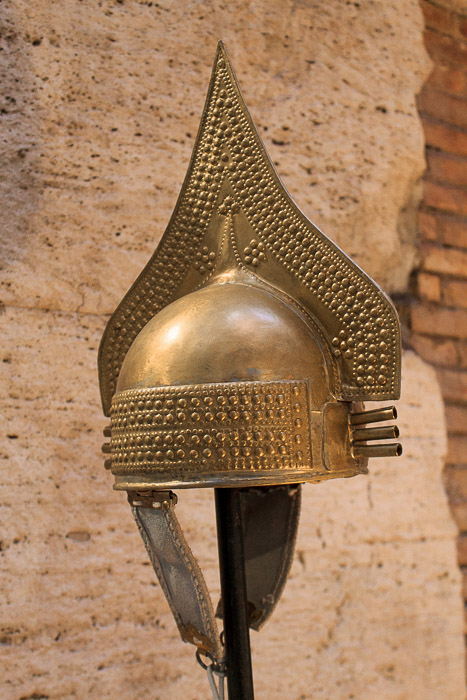
IMG_9523-20141010: A Roman military helmet, in the Circus Agonalis excavations under Piazza Navona
See all
Circus Agonalis photos.

IMG_0208-20141010: An entrance stairway into the stadium from what was once outside of it, in the Circus Agonalis excavations under Piazza Navona
See all
Circus Agonalis photos.

IMG_9525-20141010: Floor, block, and column base, in the Circus Agonalis excavations under Piazza Navona
See all
Circus Agonalis photos.

IMG_9528-20141010: Statue torso in Pentelikon marble in the Circus Agonalis excavations under Piazza Navona, discovered during 1930s excavations of the Circus Agonalis, like others such as the Pasquino
See all
Circus Agonalis photos.
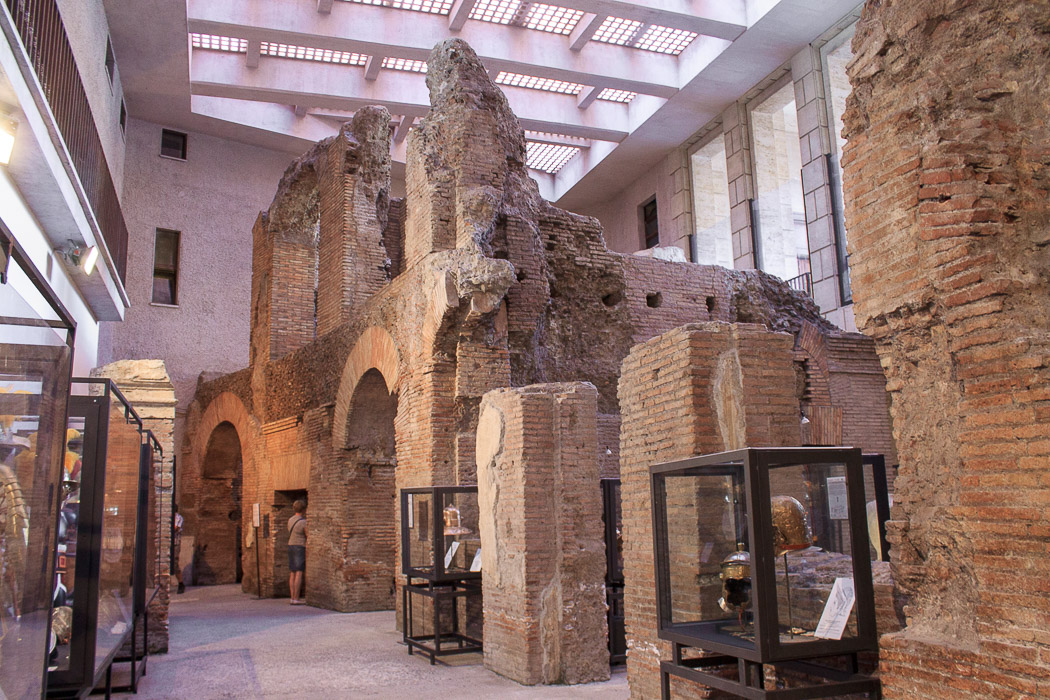
IMG_9529-20141010: Archways in the Circus Agonalis excavations under Piazza Navona
See all
Circus Agonalis photos.

IMG_9531-20141010: Armor of a Thracian Gladiator, or Traex, in the Circus Agonalis excavations under Piazza Navona
See all
Circus Agonalis photos.

IMG_9532-20141010: Armor of a Thracian Gladiator, or Traex, in the Circus Agonalis excavations under Piazza Navona
See all
Circus Agonalis photos.
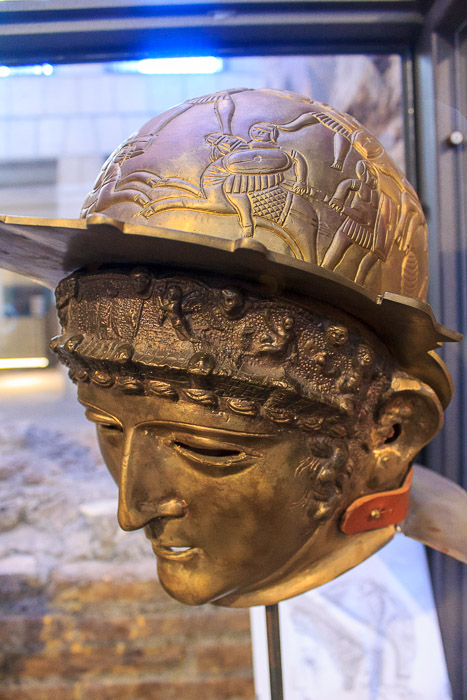
IMG_9533-20141010: A gladiator helmet, in the Circus Agonalis excavations under Piazza Navona
See all
Circus Agonalis photos.
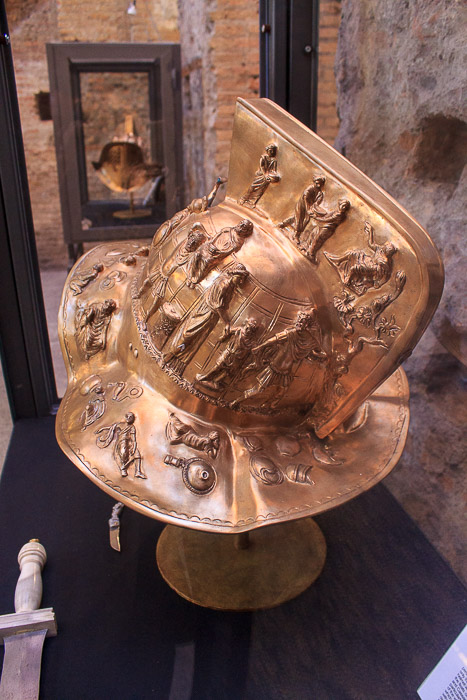
IMG_9535-20141010: A copy in the Circus Agonalis excavations under Piazza Navona of a gladiator helmet from the 1st century AD found in the Gladiator barracks in Pompeii, the original of which is in the Naples Archaeological Museum
See all
Circus Agonalis photos.

IMG_9536-20141010: A copy in the Circus Agonalis excavations under Piazza Navona of a gladiator helmet from the 1st century AD found in the Gladiator barracks in Pompeii, the original of which is in the Naples Archaeological Museum
See all
Circus Agonalis photos.

IMG_9537-20141010: Roman helmets, in the Circus Agonalis excavations under Piazza Navona
See all
Circus Agonalis photos.
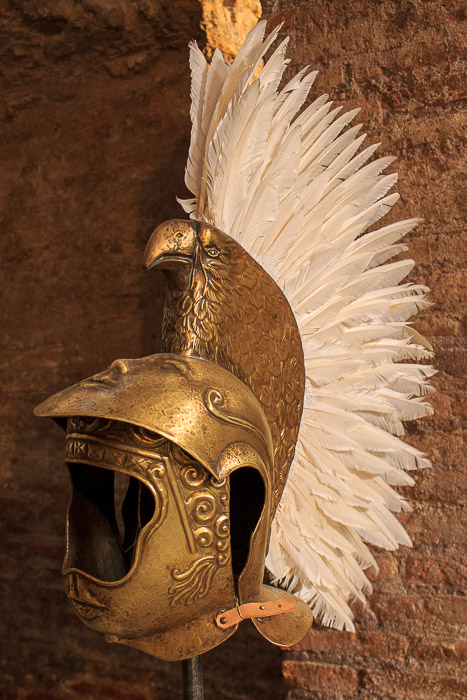
IMG_9538-20141010: Roman helmets, in the Circus Agonalis excavations under Piazza Navona
See all
Circus Agonalis photos.

IMG_9539-20141010: Roman helmets, in the Circus Agonalis excavations under Piazza Navona
See all
Circus Agonalis photos.

IMG_9540-20141010: Roman helmets, in the Circus Agonalis excavations under Piazza Navona
See all
Circus Agonalis photos.

IMG_9541-20141010: Roman helmets, in the Circus Agonalis excavations under Piazza Navona
See all
Circus Agonalis photos.

IMG_9542-20141010: The inside of the travertine Monumental Arch which was the main north entrance located at the center of the curved side of the stadium, and which is visible from the street, in the Circus Agonalis excavations under Piazza Navona
See all
Circus Agonalis photos.

IMG_9545-20141010: The Monumental Arch in the Circus Agonalis excavations under Piazza Navona was preceded by a portico (vestibule) with two columns in Porta Santa marble, of which only the bottom meter of this left hand column has survived
See all
Circus Agonalis photos.

IMG_9546-20141010: An entrance stairway into the stadium from what was once outside of it, in the Circus Agonalis excavations under Piazza Navona
See all
Circus Agonalis photos.

IMG_9549-20141010: A copy in the Circus Agonalis excavations under Piazza Navona of a parade or ceremonial helmet from the 1st century AD which was discovered in the Gladiators' barrack in Pompeii. The original is in the Naples Archaeological Museum.
See all
Circus Agonalis photos.
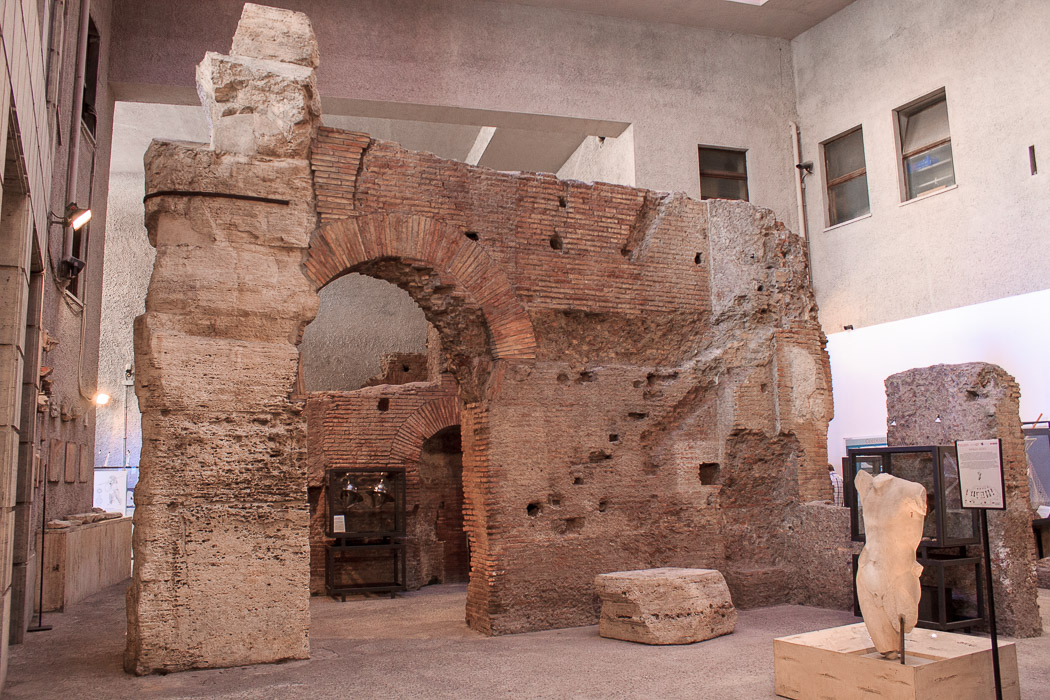
IMG_9550-20141010: An archway which apparently had a stairway beside it, in the Circus Agonalis excavations under Piazza Navona
See all
Circus Agonalis photos.
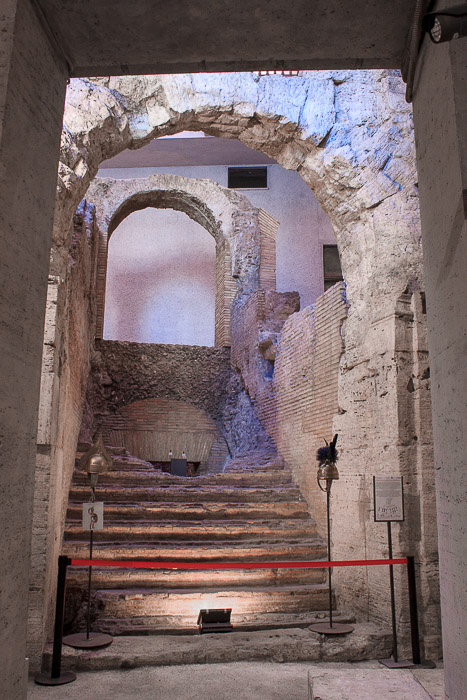
IMG_9551-20141010: An entrance stairway into the stadium from what was once outside of it, in the Circus Agonalis excavations under Piazza Navona
See all
Circus Agonalis photos.

IMG_9552-20141010: A column and the base of a fountain (?), in the Circus Agonalis excavations under Piazza Navona
See all
Circus Agonalis photos.

IMG_9556-20141010: Portrait of Domitian, in the Circus Agonalis excavations under Piazza Navona
See all
Circus Agonalis photos.
See also: